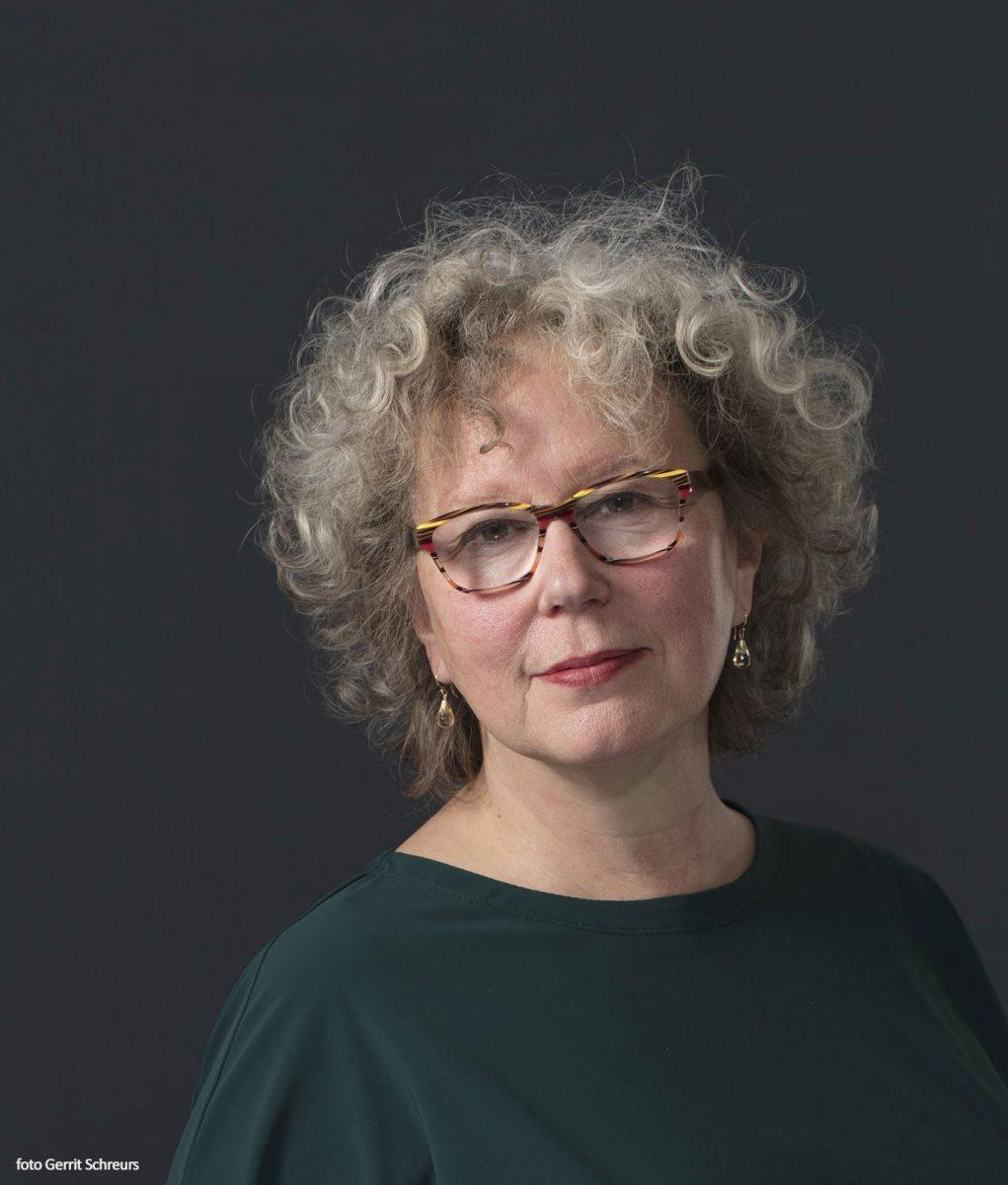
On 12 June 1924, Maurits Cornelis Escher marries Giulietta Umiker, given name Jetta, in the Italian seaside town of Viareggio, not far from Pisa. Four days later, on 16 June, at the urgent request of Jetta, a convalidation ceremony or "blessing of the marriage" was held in a room of a Catholic school. Two Italian nuns acted as witnesses.
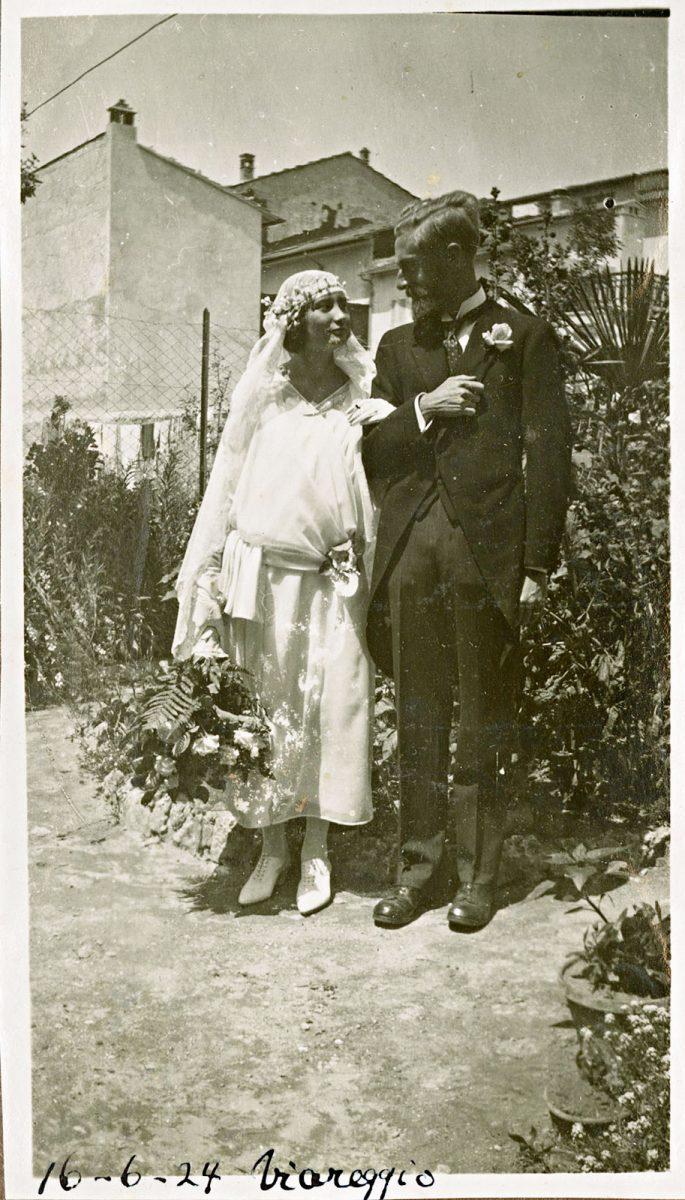
Marriage in Viareggio, 16 June 1924
“The ceremony was not particularly impressive,” noted Escher's father in his diary. After the blessing, Jetta's parents invited the small gathering of family members, including Mauk's parents, his brother George and Jetta’s sister and her husband to “déjeuner”, lunch.
More than a year before their marriage, on 31 March 1923, Escher met Jetta Umiker for the first time in Hotel Toro in Ravello on the Amalfi coast, not far from Naples. Escher was on his first long tour of Italy. Jetta, who was only six months older than him, was travelling with her parents. The Umiker family had been through some tumultuous times. Jetta’s Swiss father married Enrichetta Cattaneo while studying in Milan. Their eldest daughter Giulia (Jetta) was born in Milan on 26 December 1897. Three years later, the family moved to Nakhabino, an affluent district of Moscow. Following the outbreak of the October Revolution in 1917, the family fled Russia. Jetta's father, mother, Jetta and her two younger sisters were fortunate enough to escape via Finland and Sweden, a long and arduous journey.
Escher slowly falls in love with the quiet 25-year old, who is still living with her parents. He confides his feelings for Jetta in a letter to his best friend, Jan van der Does de Willebois:
“she was wearing a sleeveless blouse. I am always deeply stirred by a girl's arms. Not if they are red and plump, but slightly emaciated, young and innocent, and slightly sunburned. This young woman is of poor health, having suffered six months of extreme hunger in Finland and witnessed the slaughter of so many people.”
Theirs is not a passionate love affair. In his letters to his best friend Jan, who had stayed behind in the Netherlands, Escher reveals his reticence to embark on a permanent relationship. Nevertheless, he becomes deeply attached to the shy young woman. She adores watercolour painting and slips out of the room whenever her father launches into one of his bombastic tales. In Escher's mind's eye, her physical appearance does not resemble that of her parents; she looks Russian. In another letter to his friend Jan, Escher writes:
“Her great love for the Russian homeland, the Russian people and Russian art is, quite understandably, extremely pleasing to me, for it befits my own love of Russian literature.”
Escher had been in love twice before. His high school sweetheart was Roosje Ingen Housz, who, unbeknown to him, had become engaged to Jan. His other love, according to Escher's biographer Wim Hazeu, is believed to be the life model he painted during his graphic design studies in Haarlem. In both cases, his love is unrequited. Roosje in particular took great care not to hurt the young Escher's feelings, telling him that she would like to remains friends.
In 1923, during his first major tour of Italy, Mauk encounters Jetta Umiker, a shy young woman with artistic aspirations, in the garden of Hotel Toro in Ravello. When Jetta's parents move to Zürich, the two see very little of each other. Just before Jetta's departure, Escher reveals his true feelings for her. She does not reject his declarations of love. Escher struggles to adjust to Jetta's absence, and finds himself increasingly captivated by her through their frequent exchange of letters. He wants to protect Jetta and extricate her from her parents' influence.
Escher decides to travel to Zürich. He informs his parents that he has asked for Jetta's hand in marriage. In late August, Escher's parents and his older brother George travel to Zürich to meet the Umiker family. After discussing the financial arrangements of the marriage, such as monthly allowance and prenuptial agreements, both sets of parents grant their consent. The couple are now engaged. The wedding, scheduled for June, will be held in Italy, where the young couple plan to settle down. The Umikers move to Rome in January 1924.
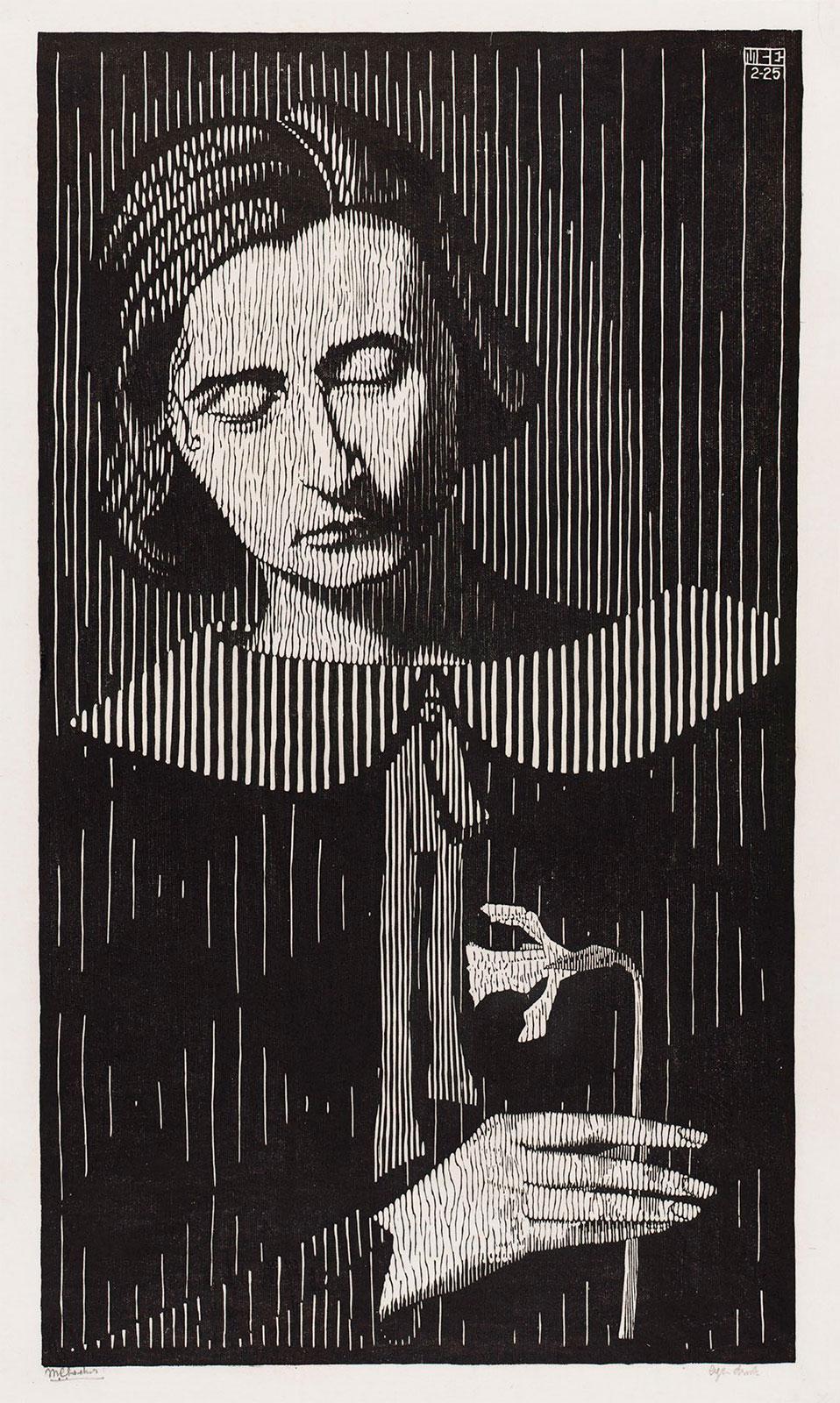
M.C. Escher, Portrait of G. Escher-Umiker (Jetta), woodcut, February 1925
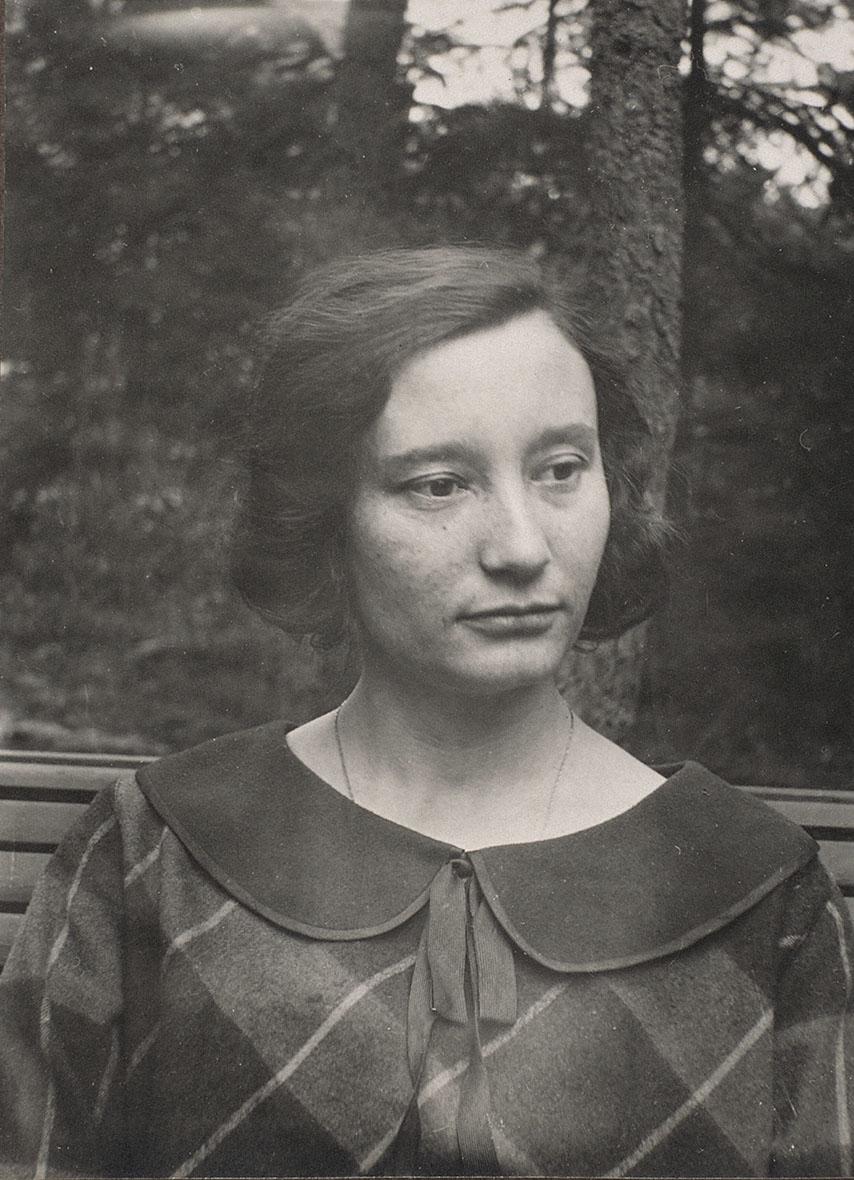
Jetta Escher-Umiker, August 1924
In February 1925, Escher makes a large woodcut of Jetta holding a flower in her hand. The work is reminiscent of religious Italian portraits of the Middle Ages, with Jetta framed in a subtle halo of light. She gazes down on the flower, seemingly deep in thought. Escher makes superb use of the woodcut medium, using vertical lines to build volume, shade and the chequered motif of her dress with its flat collar. For her face, he has used a broad chisel to apply short, small strokes. For her hair, he used a sharper chisel to create fine white lines. This is interspersed with an occasional straight line to accentuate the glossy effect. The background is made up of longer, regularly spaced lines. These are painstakingly interjected with shorter lines to depict the halo of light. The diagonal blocks of the dress and the flat collar can be seen in the photographs of Jetta taken in that time. The hands, which Escher so often commented on in his letters to Jan, feature prominently in this woodcut.
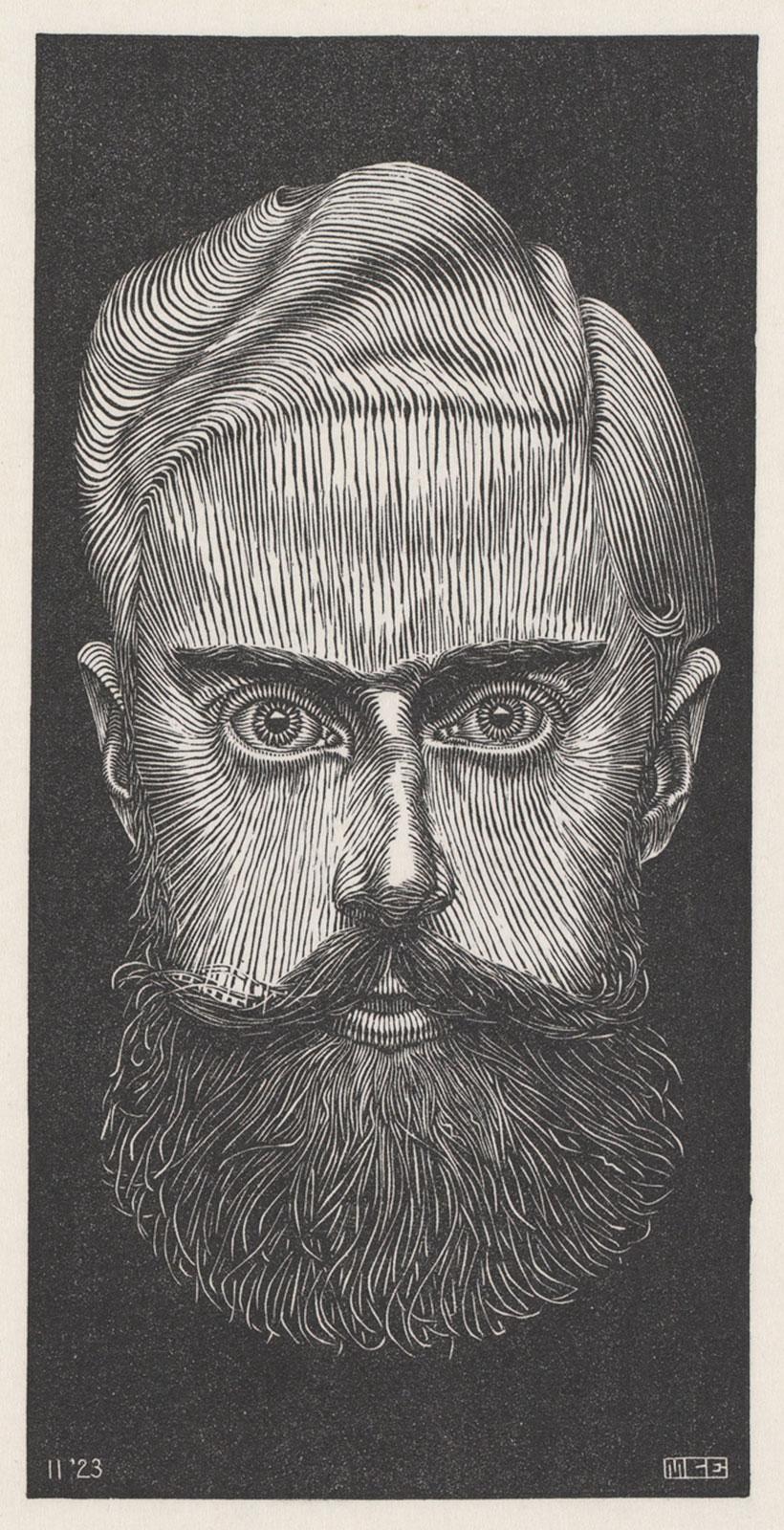
M.C. Escher, Self-portrait, woodcut, 1923
The halo and Jetta's hands and long, sensitive fingers lend a symbolic quality to the portrait. This is not a realistic representation. The portrait evokes Escher's feelings for his wife as a type of woman. Jetta symbolises the sensitive young woman: delicate and introverted. And that is what makes it such a precious portrait. The portrait is displayed alongside the self portrait of 1923, in which the viewer's attention is drawn to the piercing eyes of a bearded Escher. The same robust technique is applied. It is a method that Escher used only sparingly in his work. Both portraits have something static, motionless, a quality that may actually capture the emotions of the young artist even more keenly: “this is my truth and that is what I want to show you”.
